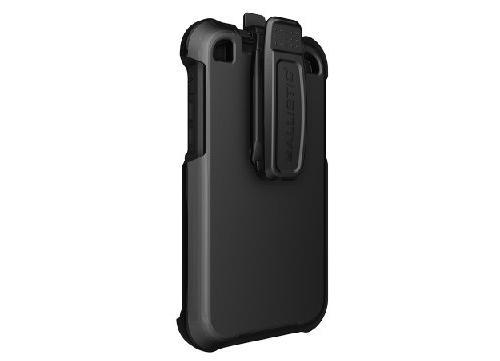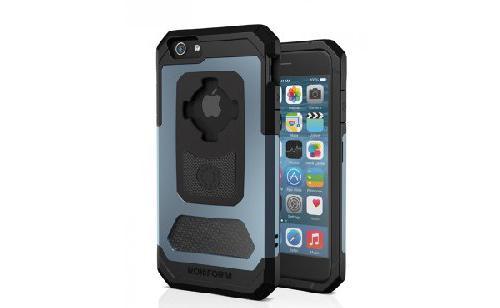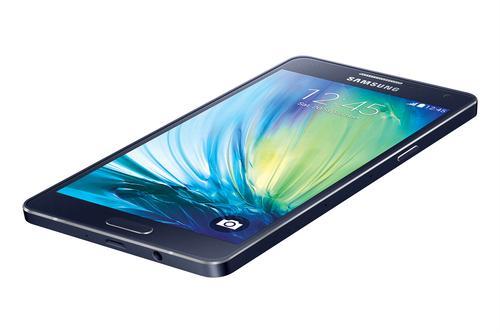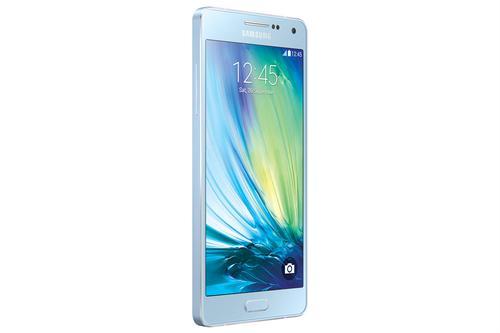Showing posts with label Phone. Show all posts
Tuesday, 18 November 2014
Opera mobile store to become the default app store on legacy Nokia phones
Opera Software has signed an agreement with Microsoft to become the default mobile app store on the Nokia Symbian feature phones and Nokia X platform devices. From the first quarter of next year, the Nokia Store app will redirect to the Opera Mobile Store for the Nokia Series 40, Series 60, Symbian, Asha, and Nokia X.
With the agreement, Opera will be the third largest mobile app store in the world after Google Play and the App Store. Over 40,000 developers contribute to the Opera mobile store ecosystem, which has close to 300,000 apps and sees about 70 million downloads every month. Opera recently surpassed 50 millions users in India and has become the third most downloaded app in the country.
Lars Boilesen, CEO of Opera Software, told Tech in Asia: “We are the third biggest independent mobile advertising company after Facebook and Google. With our strong user base, the mobile app developers can advertise their apps to a larger audience and also make the best of our billing integration which lets users buy apps even without a credit card.”
Nokia Symbian, Asha, and Nokia X device owners will get to use the web-based Opera mobile store to browse, discover, and download apps. However, users on the Nokia X platform, which is based on the Android Open Source Project, will have a slightly different experience. The tweak is needed in order to deliver a typical Android smartphone experience to these users.
The migration of the Nokia app store to Opera is expected to finish by the first half of 2015. The Nokia store will no longer be accessible following the move.
techinasia
With the agreement, Opera will be the third largest mobile app store in the world after Google Play and the App Store. Over 40,000 developers contribute to the Opera mobile store ecosystem, which has close to 300,000 apps and sees about 70 million downloads every month. Opera recently surpassed 50 millions users in India and has become the third most downloaded app in the country.
Lars Boilesen, CEO of Opera Software, told Tech in Asia: “We are the third biggest independent mobile advertising company after Facebook and Google. With our strong user base, the mobile app developers can advertise their apps to a larger audience and also make the best of our billing integration which lets users buy apps even without a credit card.”
Nokia Symbian, Asha, and Nokia X device owners will get to use the web-based Opera mobile store to browse, discover, and download apps. However, users on the Nokia X platform, which is based on the Android Open Source Project, will have a slightly different experience. The tweak is needed in order to deliver a typical Android smartphone experience to these users.
The migration of the Nokia app store to Opera is expected to finish by the first half of 2015. The Nokia store will no longer be accessible following the move.
techinasia
Microsoft to shut down Nokia Store for feature phones
As Microsoft continues sloughing off the Nokia brand name on phones, the Nokia Store for feature phones will cease to exist.
Having already dropped the Nokia branding for its latest smartphone -- the Microsoft Lumia 535 -- Microsoft is set to shut down the Nokia Store in the first half of 2015.
The Nokia Store enables owners of Nokia feature phones, such as the Asha series, and Symbian and Nokia X phones to download apps to their devices. Based on the last statistics released two years ago, the store was serving up to 15 million downloads daily.
Users will, however, still be able to get access to apps via a deal with Opera Software. Starting in the first quarter of 2015, users will be redirected to the Opera Mobile Store, which currently has close to 300,000 apps.
The migration of users to the Opera Mobile Store is expected to be complete in the first half of 2015, when the Nokia Store shuts down.
Both Microsoft and Opera are "looking into methods to help developers move their content over, and this will be communicated to developers ahead of the migration," Opera said in statement.
As for phone owners who have paid for apps from the Nokia Store, Opera said the "the company will work closely with developers to find out the best solution for consumers."
Opera added that consumers should not delete a previously purchased app once the transition takes place, or they will need to buy it again.
This isn't the first time that Opera and Microsoft have collaborated. In August, both companies struck a deal to use the Opera Mini browser as the default browser for Microsoft's feature and Asha handsets.
cnet
Having already dropped the Nokia branding for its latest smartphone -- the Microsoft Lumia 535 -- Microsoft is set to shut down the Nokia Store in the first half of 2015.
The Nokia Store enables owners of Nokia feature phones, such as the Asha series, and Symbian and Nokia X phones to download apps to their devices. Based on the last statistics released two years ago, the store was serving up to 15 million downloads daily.
Users will, however, still be able to get access to apps via a deal with Opera Software. Starting in the first quarter of 2015, users will be redirected to the Opera Mobile Store, which currently has close to 300,000 apps.
The migration of users to the Opera Mobile Store is expected to be complete in the first half of 2015, when the Nokia Store shuts down.
Both Microsoft and Opera are "looking into methods to help developers move their content over, and this will be communicated to developers ahead of the migration," Opera said in statement.
As for phone owners who have paid for apps from the Nokia Store, Opera said the "the company will work closely with developers to find out the best solution for consumers."
Opera added that consumers should not delete a previously purchased app once the transition takes place, or they will need to buy it again.
This isn't the first time that Opera and Microsoft have collaborated. In August, both companies struck a deal to use the Opera Mini browser as the default browser for Microsoft's feature and Asha handsets.
cnet
Samsung to cut smartphone models by up to a third in 2015
Samsung will stop producing so many models of smartphones and focus on a core set of devices in the new year, the company said Tuesday.
Speaking to investors in New York, Samsung's head of investor relations, Robert Yi, said his company plans to cut the number of smartphone models it produces in 2015 by 25 percent to 30 percent, The Wall Street Journal reported.
Though Samsung is still a juggernaut in the mobile business, the company has watched its smartphone business start to falter in key markets, such as China. In China specifically, chief competitor Xiaomi has been able to increase smartphone shipments and get consumers excited about its products by delivering higher-end devices at budget-conscious prices.
Meanwhile, Apple, with its new iPhone 6 and iPhone 6 Plus, has moved to offer smartphones with larger screens, which had been a key point of distinction for Samsung.
The South Korean company's latest quarterly returns put the situation in stark relief. At the end of October, Samsung said that third-quarter income in its mobile business tumbled 74 percent from the previous year and that its operating profits were the lowest they'd been since the middle of 2011. It also warned that smartphone competition would be fierce toward the end of the year.
Samsung is also dealing with increasingly strained margins as its marketing costs have risen considerably. In the third quarter, the company generated just 7 percent margins on smartphones, down from 15 percent in previous years, the Journal reported.
Prompted by the shifts, Samsung had already said that it plans to "fundamentally reform" its product lineup.
Here's how overwhelming Samsung's array of products has become: In just its flagship Galaxy S line, Samsung offers five models beyond the namesake Galaxy S5: the knockabout Galaxy S5 Active and Galaxy S5 Sport; the more modest Galaxy S5 Mini; the Galaxy K Zoom with a higher-end camera; and the Galaxy S5 LTE-Advanced for higher Internet speeds.
There's also the Note phablet line, the new, metal-clad Galaxy Alpha devices and a long list of other Android and Windows Phones devices.
The idea behind streamlining its offerings is simple: the company will be able to cut its overall costs and find ways to improve efficiency in production. Marketing dollars will also be spread across fewer products. Samsung is also planning to use the same components in multiple products to help cut costs.
Yi didn't say how many smartphones the company will ship next year. The company did not respond to a request for comment.
CNET
Speaking to investors in New York, Samsung's head of investor relations, Robert Yi, said his company plans to cut the number of smartphone models it produces in 2015 by 25 percent to 30 percent, The Wall Street Journal reported.
Though Samsung is still a juggernaut in the mobile business, the company has watched its smartphone business start to falter in key markets, such as China. In China specifically, chief competitor Xiaomi has been able to increase smartphone shipments and get consumers excited about its products by delivering higher-end devices at budget-conscious prices.
Meanwhile, Apple, with its new iPhone 6 and iPhone 6 Plus, has moved to offer smartphones with larger screens, which had been a key point of distinction for Samsung.
The South Korean company's latest quarterly returns put the situation in stark relief. At the end of October, Samsung said that third-quarter income in its mobile business tumbled 74 percent from the previous year and that its operating profits were the lowest they'd been since the middle of 2011. It also warned that smartphone competition would be fierce toward the end of the year.
Samsung is also dealing with increasingly strained margins as its marketing costs have risen considerably. In the third quarter, the company generated just 7 percent margins on smartphones, down from 15 percent in previous years, the Journal reported.
Prompted by the shifts, Samsung had already said that it plans to "fundamentally reform" its product lineup.
Here's how overwhelming Samsung's array of products has become: In just its flagship Galaxy S line, Samsung offers five models beyond the namesake Galaxy S5: the knockabout Galaxy S5 Active and Galaxy S5 Sport; the more modest Galaxy S5 Mini; the Galaxy K Zoom with a higher-end camera; and the Galaxy S5 LTE-Advanced for higher Internet speeds.
There's also the Note phablet line, the new, metal-clad Galaxy Alpha devices and a long list of other Android and Windows Phones devices.
The idea behind streamlining its offerings is simple: the company will be able to cut its overall costs and find ways to improve efficiency in production. Marketing dollars will also be spread across fewer products. Samsung is also planning to use the same components in multiple products to help cut costs.
Yi didn't say how many smartphones the company will ship next year. The company did not respond to a request for comment.
CNET
Thursday, 6 November 2014
OnePlus has sold 500,000 phones so far, half of them in China
OnePlus has sold just over 500,000 phones since the new Chinese brand hit the market in 16 countries in May. Carl Pei, OnePlus’ co-founder, revealed the number to Forbes and said that the plan is to sell one million by the end of the year.
Pei explained to Tech in Asia via email that half of those phones sold are in China.
OnePlus makes only one gadget at the moment, the Android-based OnePlus One, which has received largely positive reviews from around the world for being a solid yet powerful phone for just US$300.
While one million would be a solid tally for OnePlus’ first eight months in business, it seems clear that the new brand, which is a spin-off from Oppo, is not seeing the same traction as Xiaomi. The disruptive Xiaomi, which first started making affordable smartphones in late 2011, sold 7.2 million phones in 2012, its first full year in business. Xiaomi plans to sell 60 million this year.
Pei also explained to Forbes that – following the lead of Xiaomi again – OnePlus is looking into making a variety of gadget accessories in order to boost its revenues. “We’ve made a really social brand that people are fans of. If we make lifestyle products or specialized accessories, I think those will do really well,” he added.
The need to make money from other channels is imperative because, as Pei reveals, OnePlus makes a mere “single-figure dollar amount on each phone” that it sells. It’s already running a trimmed-down business that only sells online and has minimal inventory. But that makes it tough to ramp up production. Pei replied to our question about manufacturing constraints by explaining: “Manufacturing capacity has never been the issue, but rather planning. A key component [of the phone] has a three-month order lead time, and due to us not having large margins, we can’t afford to manufacture more than we’re sure to sell.”
TechInAsia
Pei explained to Tech in Asia via email that half of those phones sold are in China.
OnePlus makes only one gadget at the moment, the Android-based OnePlus One, which has received largely positive reviews from around the world for being a solid yet powerful phone for just US$300.
While one million would be a solid tally for OnePlus’ first eight months in business, it seems clear that the new brand, which is a spin-off from Oppo, is not seeing the same traction as Xiaomi. The disruptive Xiaomi, which first started making affordable smartphones in late 2011, sold 7.2 million phones in 2012, its first full year in business. Xiaomi plans to sell 60 million this year.
Pei also explained to Forbes that – following the lead of Xiaomi again – OnePlus is looking into making a variety of gadget accessories in order to boost its revenues. “We’ve made a really social brand that people are fans of. If we make lifestyle products or specialized accessories, I think those will do really well,” he added.
The need to make money from other channels is imperative because, as Pei reveals, OnePlus makes a mere “single-figure dollar amount on each phone” that it sells. It’s already running a trimmed-down business that only sells online and has minimal inventory. But that makes it tough to ramp up production. Pei replied to our question about manufacturing constraints by explaining: “Manufacturing capacity has never been the issue, but rather planning. A key component [of the phone] has a three-month order lead time, and due to us not having large margins, we can’t afford to manufacture more than we’re sure to sell.”
TechInAsia
Sunday, 2 November 2014
5 Tough Cases for Your iPhone 6
The iPhone 6 is bigger than ever, meaning you get the benefits of a large screen — an improved display and functionality — but also a greater target to crack if it’s dropped (not to mention its bendable aluminum case). This is why you might want more rugged protection with the new iPhone 6 and 6 Plus. Here are five cases to better protect your new smartphone — bends, unexpected drops, and beer spills included.

1. Best for unobtrusive protection
The Case: OtterBox Symmetry Series (Current price: $49.95 for iPhone 6 Plus case)
What We Like: It easily fit in our pocket. (And our iPhone 6 didn’t bend.)
Toughness: The Symmetry’s thin frame has just enough rubber jutting out on the front to protect the screen. Overall, it’s unobtrusive and designed to look like a form that goes over the phone rather than a case. Plus, the rubber and silicone edges give the phone a bounce when dropped dangerously on its corners or edges.
More from Men’s Journal:
The 9 Most Stylish iPhone 6 Cases on the Market
The 10 Best Smartphone Accessories
Should You Buy an iPhone 6?
More from Men’s Journal:
The 9 Most Stylish iPhone 6 Cases on the Market
The 10 Best Smartphone Accessories
Should You Buy an iPhone 6?

2. Best for outdoor use
The Case: Ballistic Hard Core Case ($60)
What We Like: That extra security that makes you feel a lot more powerful than you actually are.
Toughness: This one means business. Four pieces combine to shield your iPhone. In fact, you should probably be more worried about getting it out of the case. The main unit keeps it secure with several clasps and a screen cover. A third, tougher layer’s clip lets you carry it on your side, which might be preferable to your pockets. To round it off, a rubber exterior shell provides extra padding for drops up to 12 feet.
What We Like: That extra security that makes you feel a lot more powerful than you actually are.
Toughness: This one means business. Four pieces combine to shield your iPhone. In fact, you should probably be more worried about getting it out of the case. The main unit keeps it secure with several clasps and a screen cover. A third, tougher layer’s clip lets you carry it on your side, which might be preferable to your pockets. To round it off, a rubber exterior shell provides extra padding for drops up to 12 feet.

3. Best for commuting
The Case: Rokform Aluminum Case ($98.99)
What We Like: The mounting accessories. They make it possible to use your phone’s GPS in the car or on your bike commute without worrying about that inevitable drop. Because it’s not a question of if it’s going to happen, but when.
Toughness: California-based Rokform designed this body of tech armor with sturdy aluminum and rubber that protect your phone on all sides and edges.
What We Like: The mounting accessories. They make it possible to use your phone’s GPS in the car or on your bike commute without worrying about that inevitable drop. Because it’s not a question of if it’s going to happen, but when.
Toughness: California-based Rokform designed this body of tech armor with sturdy aluminum and rubber that protect your phone on all sides and edges.

4. Best for Grip
The Case: Speck MightyShell ($34.95)
What We Like: The outer edges offer some extra holding power, which will come in handy when you upgrade and first grab your phone.
Toughness: Don’t let the fun colors and thin body fool you — this case can withstand some pretty intense impact. Speck prepared the MightyShell to expect those drops down flights of stairs with a shock-absorbing casing that surrounds the phone, including the front edges of the fragile screen.
What We Like: The outer edges offer some extra holding power, which will come in handy when you upgrade and first grab your phone.
Toughness: Don’t let the fun colors and thin body fool you — this case can withstand some pretty intense impact. Speck prepared the MightyShell to expect those drops down flights of stairs with a shock-absorbing casing that surrounds the phone, including the front edges of the fragile screen.

5. Best for sliding in your pocket
The Case: Spigen Tough Armor Case ($35)
What We Like: Its slim design and armor-like appearance.
Toughness: The name of this case indicates serious protection — and then some. With a polycarbonate body and an intuitive design, your phone will feel safe without being in the way. Although it’s not as large as a traditional heavy-duty case, the Tough Armor houses a slim profile with an outer lip that prevents a cracked screen, which can be a hard thing to find in thinner cases.
What We Like: Its slim design and armor-like appearance.
Toughness: The name of this case indicates serious protection — and then some. With a polycarbonate body and an intuitive design, your phone will feel safe without being in the way. Although it’s not as large as a traditional heavy-duty case, the Tough Armor houses a slim profile with an outer lip that prevents a cracked screen, which can be a hard thing to find in thinner cases.
Yahoo
Samsung’s 2 New Phones Are All Metal, All Selfie, All Too Familiar
Oh, hey, is that your iPhone … wait a minute. That’s not an iPhone. That’s a … Samsung?
That’s right; Samsung has just announced two new smartphones that are dead ringers for Apple’s iPhone 5 and 5s. Say hello to the Galaxy A5 and the Galaxy A3, two handsets that Samsung hopes will get younger smartphone shoppers interested in the Korean company’s wares.
Samsung is pushing the handsets’ “social networking” capabilities, which is to say they’ve got sharp front cameras for taking clear selfies. Does anyone else find it upsetting that phones are now being marketed based on their selfie abilities?

Duck-faced bathroom mirror photos aside, another thing that makes the Galaxy A5 and A3 so interesting is the fact that they use an all-metal design. That means that the phones are built just like Apple’s iPhone and HTC’s One M8, two of the most attractive phones on the market.
Samsung has taken a lot of heat for using too much plastic on its smartphones, while other companies use more premium metal materials. With its recent Galaxy Alpha and Note 4, Samsung has tried to change course, using aluminum frames but sticking with plastic back panels.
The phones’ unibody designs also help make them the thinnest Samsung smartphones around, with the A5 and A3 measuring just 0.26 inches and 0.27 inches thick, respectively.

Both phones get Samsung’s excellent Super AMOLED display technology, though the A5 gets a 5-inch HD screen and the A3 gets a 4.5-inch qHD screen. That means the A5’s display will be sharper and clearer than the A3’s.
Inside, the Galaxy A5 and A3 get quad-core processors, though the A5 gets 2 GB of RAM, while the A3 gets just 1 GB, so the A5 will likely be a bit faster than its sibling.
The Galaxy A5 also gets a 13-megapixel rear camera versus the A3’s 8 MP rear camera. Both phones, however, get the same 5-megapixel front cameras. Most smartphones don’t offer front-facing cameras with such high megapixel counts, but Samsung wants to make sure your selfies look as good as possible.
There’s just one downside to the Galaxy A5’s and Galaxy A3’s new unibody design, and that’s the fact that the phones’ back panels aren’t removable, so you won’t be able to replace their batteries if they start to go south on you. Still, the handsets will include microUSB card slots for expanding storage space.

The Galaxy A5 and Galaxy A3 are the latest in a string of smartphones Samsung has released in 2014. In fact, in 2014 alone, the company has debuted no fewer than 10 new handsets.
The largest smartphone manufacturer in the world, Samsung has hit a rough patch as of late, with the company recently announcing that it saw a 60 percent drop in profit. Sales of Samsung smartphones also saw a decrease of 20 percent versus last year.
One of the biggest issues facing Samsung has been its performance in China, the largest smartphone market in the world. Chinese consumers have begun moving away from Samsung’s devices in favor of local brands, which are generally high quality and low cost.
The Galaxy A5 and A3, which will launch first in China as midrange handsets, are a clear indication that Samsung is serious about winning back Chinese consumers.
So far, Samsung hasn’t announced any plans to bring the Galaxy A5 and A3 to the United States. But we’re still holding out hope. At the very least, we’d like to see more Samsung phones use the new handsets’ design.
Daniel Howley - YAHOO
Subscribe to:
Comments
(
Atom
)








